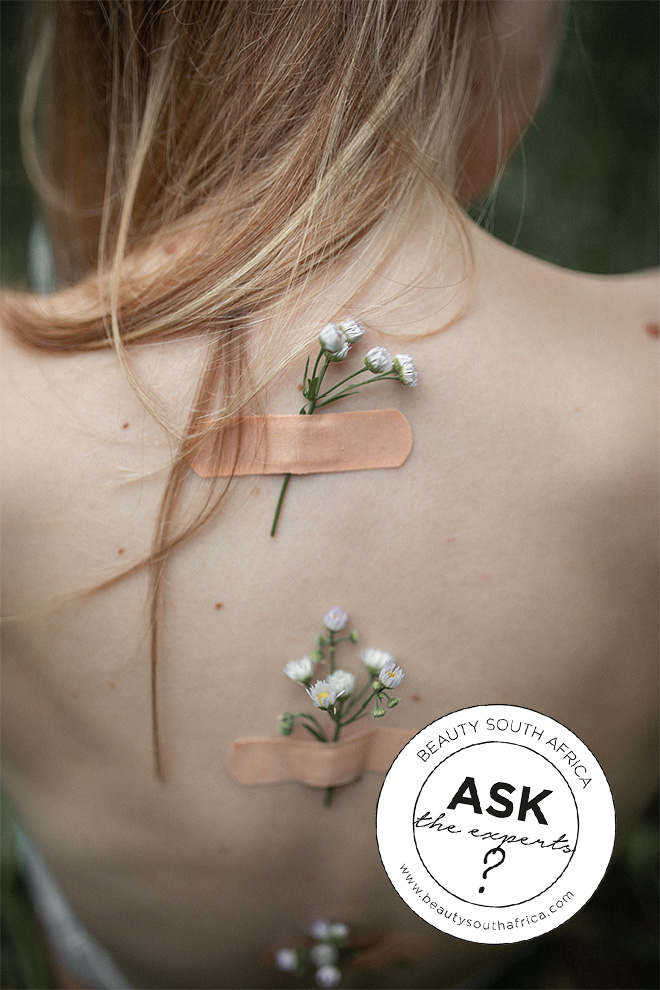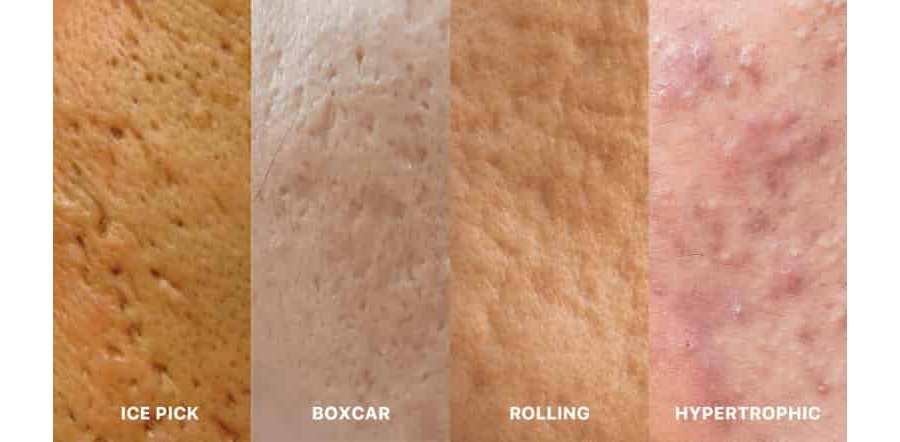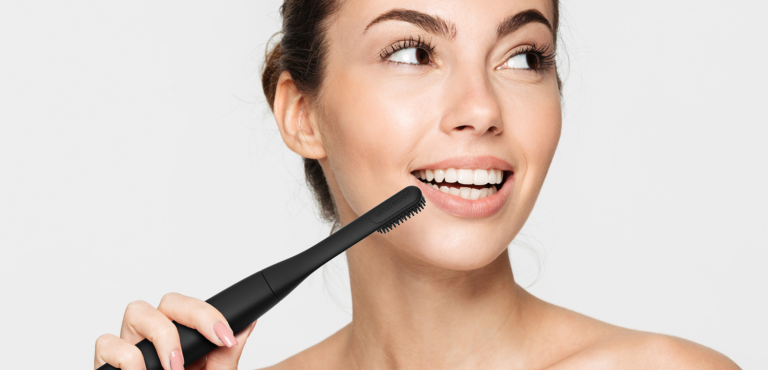
Whether it’s teenage acne or adult acne, caused by oily skin, bacteria or hormones, there is always a chance of scarring once the breakouts have cleared. As everyone affected by acne will know, it can be challenging to treat and
minimise scars. But don’t despair; it is never too late to start, and there are various non-invasive treatments available to improve the look of the skin.
When finding the right treatment for you, it is vital to determine the type of acne scar you’re treating.
Rolling and boxcar acne scars
Both rolling and boxcar scars are indented. Rolling acne scars can be shallow or deep, but common characteristics are their soft, sloping edges and circular shape. Think of the way we often describe a hill as “rolling” – a rising and falling form. If you had to stretch the skin by pulling it in opposite directions, the scar might not be visible. Rolling scars are common in skins that have endured a long-term struggle with inflammatory acne.
Boxcar scars are similar to rolling scars, but instead of a soft, circular shape, they have jagged or vertical edges, resulting in a more square-like appearance. They are known to be caused by inflammatory acne.
Both rolling and boxcar acne scars show remarkable improvements when treated with a series of skin needling treatments such as Dermapen and Laser Genesis. These treatments essentially injure the skin in a controlled and safe way that cannot cause any further scarring or damage. Once the skin recognises that it is injured, it stimulates the repairing process at the injury site—a process which creates new and healthy collagen.
Dermal filler is an alternative treatment for indented scars. Injecting filler into them plumps them up, making the indentation less noticeable, and simultaneously the presence of dermal filler encourages the skin to produce more collagen. It is extremely effective when done on rolling scars, but boxcar scars can be trickier because of their sharp edges.

Ice pick and keloidal scars
Ice pick scars are narrower than rolling, and boxcar scars, but are a lot deeper. It makes them more difficult (but not impossible) to treat. They are the result left behind after cystic acne gets infected. Many of the treatments recommended for rolling and boxcar scars are effective in treating ice pick scars.
Keloidal scars treatment often includes a Laser Genesis session, followed by injecting steroidal drugs and botulinum toxin into the scar. It can shrink the scar, but will also prevent it from growing larger over time.
Dealing with acne is stressful enough, and it may seem unfair to have to deal with scarring once the acne finally clears. Luckily there are a lot of treatment options to minimise the appearance of scars. Start your journey towards
smoother skin by booking an appointment with one of Skin Renewal’s experienced doctors. They will assess your skin to determine the type of scars you’re dealing with, and to find a solution best suited to your needs.
This post was sponsored by Skin Renewal.







2 Responses
The product seem so wonderful I have this problem & it’s making me feel so uncomfortable, Ido like to haverify this product.
Is there any way to prevent breakouts after waxing?